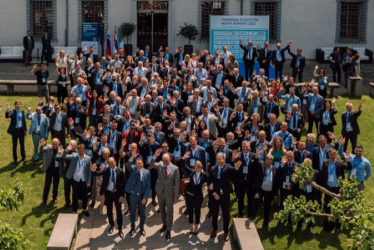
The evolution of the Hydrogen Ecosystem North Adriatic Conference to the present day has been a story of success aiming to respond to the triple planetary crisis: climate change, resource depletion and biodiversity loss, by bringing new opportunities into the target region of the North Adriatic, foster its dynamic transformation and interconnectedness. In the future, the Conference will become the platform to attract talent, innovation and funding.
An initiative originated from the industry
ECUBES (www.ecubes.si) is an innovation leader in the advancement of the transition towards the sustainable future developing clean energy infrastructures based on hydrogen technologies. In 2021, ECUBES, in cooperation with the Clean Hydrogen Partnership and Hydrogen Europe Research, and supported by the Slovenian Ministry of Energy and Infrastructure and by industry associations from the three participating countries, organised the first Ecosystem Conference North Adriatic with the intent to facilitate the collaboration among key actors in the logic of the Quadruple Helix innovation model among representatives of Italy (FVG), Croatia and Slovenia.
The initiative gained traction, above all, thanks to the shared vision and support of their key exponents, entrepreneurs, their associations, and representatives from the academia, including Roberto Taccani from the University of Trieste, Vjekoslav Jukic from the Croatian Ministry of Economy and Sustainable Development, Anna Mareschi Danieli, CEO of Danieli Group, Tomaž Vuk, CEO of Alpacem, Janez Čeh, CEO at Sitel, and many others. After having attracted an initial attention of the authorities of the three target territories, the initiative built further on the signed agreement (LoI) in early 2022, by the representatives of the Slovenian Ministry of Infrastructure, the Croatian Ministry of Economy and Sustainable Development, and the Friuli Venezia Giulia (FVG) Autonomous Region of Italy, to jointly contribute to the European Green Deal and European Hydrogen Strategy goals[1]. With this LoI the three signatories jointly committed to implementing a common innovation agenda and cooperation projects to accelerate the deployment of hydrogen-based solutions, strengthening local hydrogen ecosystems and building inter-regional value chains. The three territories which constitute the NAHV, FVG (Italy), Slovenia and Croatia, have been considered by the European Hydrogen Backbone as one part of the larger pan-European hydrogen supply and import corridors, which will connect industrial clusters, ports, and hydrogen valleys to regions of abundant hydrogen supply.
ECUBES organised the second edition of Ecosystem Conference North Adriatic in September 2022 and a third one in April 2023, following the recognition of the rewarded pillar-project of the Ecosystem, the NAHV, as an exemplary approach and the highest graded proposal in the selection.
[1] On 14th March 2022 the Slovenian State Secretary of the Ministry of Infrastructure, the Croatian State Secretary of the Ministry of Economy and Sustainable Development, and the President of the Friuli Venezia Giulia Autonomous Region signed a joint letter of intent (LoI) in which they recognised the relevance of regional cooperation and a cross-border hydrogen valley in boosting energy transition and promoting sectorial integration between transport, hard-to-abate industries, and end users in an integrated ecosystem.
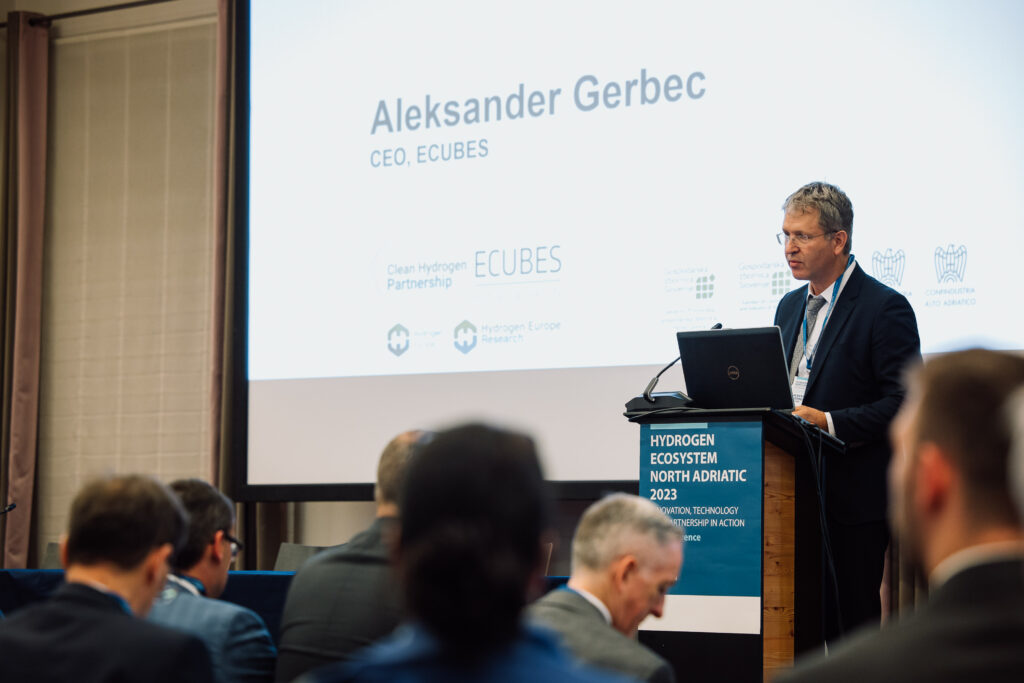
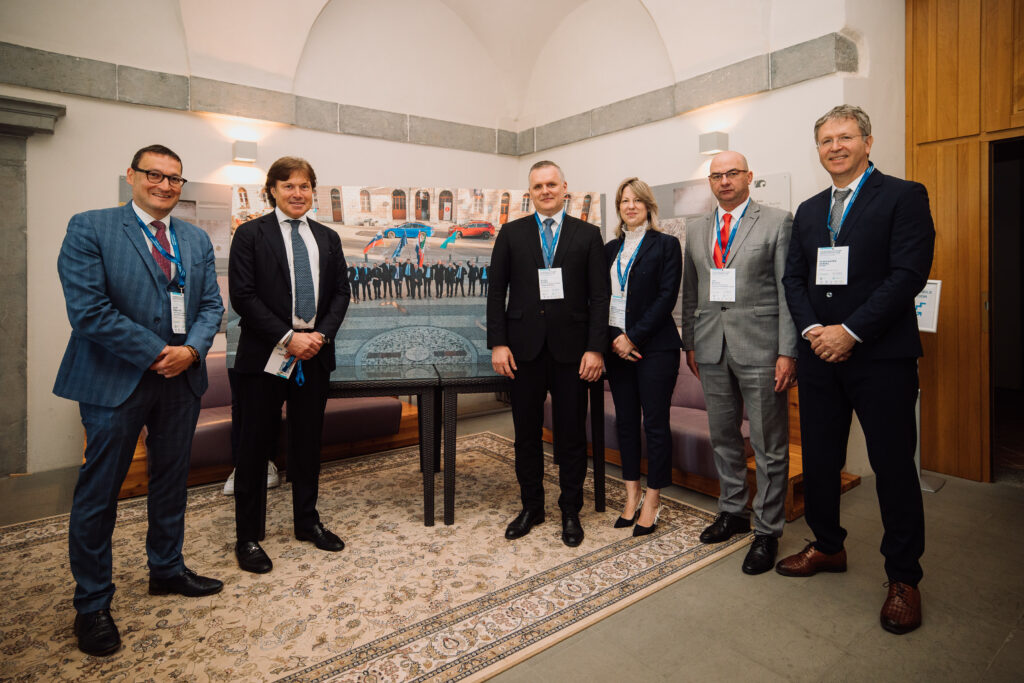
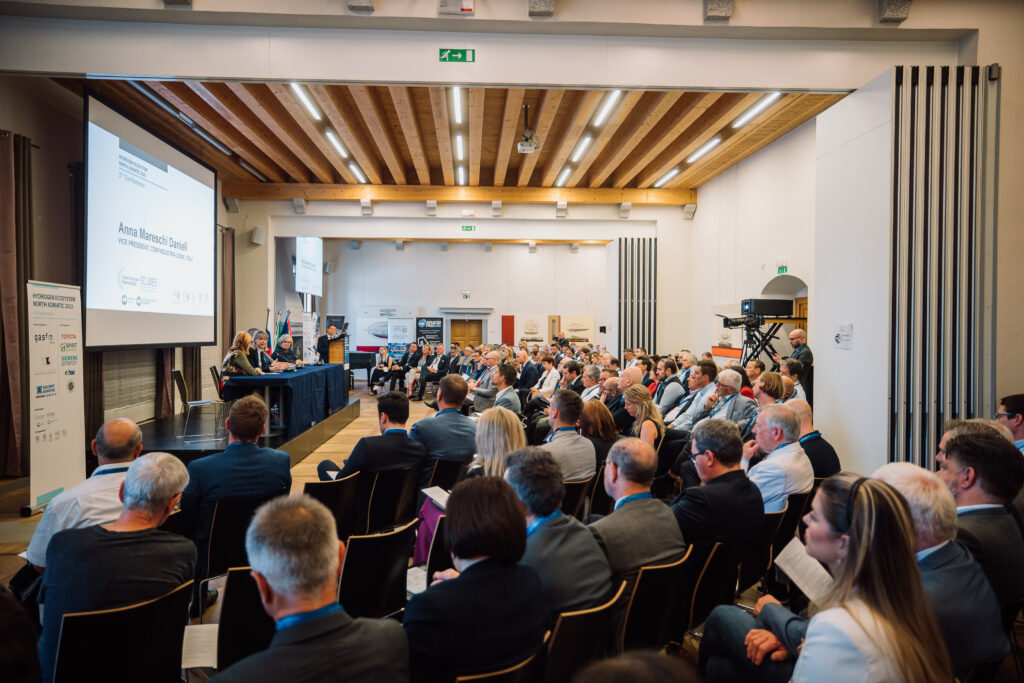
NAHV Horizon Europe, a 6-year initiative co-financed by Clean Hydrogen Partnership and its members was launched in September 2023. One of its main objectives is to assure new initiatives to evolve to strengthen the Ecosystem. At the time of the signing of this Contract, a governance structure in a form of a non-profit association, an „AISBL“ is expected to be established by the NAHV partners and other parties to assure continued orchestration and long-term governance of the initiative. NAHV, NACHIP (North Adriatic Clean Hydrogen Innovation and Investment Platform), other consortia and initiatives determine a multi-level stakeholder situation of the emerging North Adriatic Hydrogen Ecosystem, in which multiple stakeholders are have been clustering around an increasing number of ongoing and emerging initiatives.
Proven success of the Hydrogen Ecosystem North Adriatic to be adequately sustained for the future
Through the past years, the Conference spun a bold coordinated action shared among participants from the industry, the academia and policy decision-makers. The impact created thanks to the dialogue initiated and facilitated at the Conference brought about, first of all, the visibility and the attention to a transnational, industry-led initiative to crate the hydrogen Ecosystem North Adriatic. Furthermore, the initiative gained support of the policy decision-makers at the ministerial level to articulate the proposal for the North Adriatic Hydrogen Valley, a Horizon Europe initiative co-financed by the Clean Hydrogen Partnership and its members, and receive the funding of 25 million euro. This initiative involves a consortium of 40 partners from the industry, academia and research as well as policy-makers and aims to embrace further initiatives under a permanent governance structure. A follow-up consortium of 12 partners the North Adriatic Clean Hydrogen Innovation and Investment Platform (NACHIP) has already been awarded a grant of 7.6 million euro through the Interregional innovation investments instrument, a part of the European Regional and Development Fund (ERDF). These initiatives have successfully attracted significant investments into the North Adriatic region, with projections exceeding 800 million euros over the coming years. This financial influx is anticipated through the execution of more than 20 industrial testbeds and pilot projects, alongside various intended initiatives in the realms of education and infrastructure. By 2029, it is estimated that over 5,000 tons of renewable hydrogen will be produced solely as a result of the initiatives already implemented within the Ecosystem, with additional projects currently in the planning stages.
Furthermore, the development of the Hydrogen Ecosystem North Adriatic has prompted a commitment from the Global Gateway instrument to support Brazil in establishing the necessary infrastructure for the export of hydrogen and ammonia to the North Adriatic. This initiative has been backed by a pledge of a two-billion-euro investment, as announced by the President Ursula von der Leyen in November 2023. This and other actions will position the Hydrogen Ecosystem North Adriatic as one of the fundamental pillars of the European hydrogen architecture as laid out by the EU Hydrogen Strategy. It has become evident that the progress of the target region of the North Adriatic based, to an important extent on hydrogen, what calls for even more openness, dialogue, transnational cooperation at the regional, EU- and international level, and for more bold decisions yet to be made.
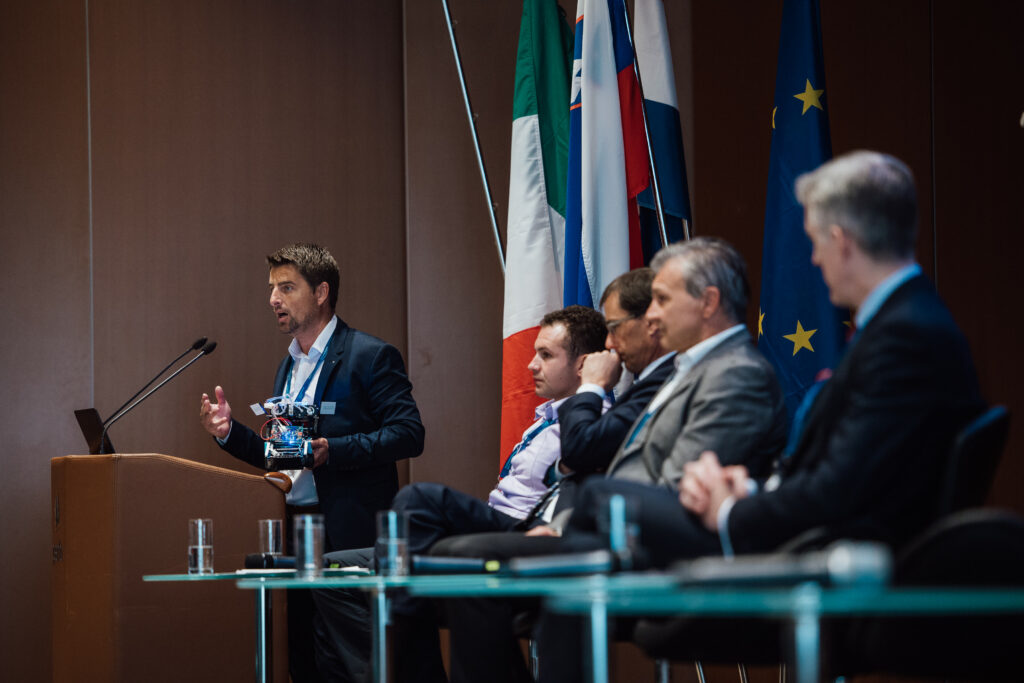
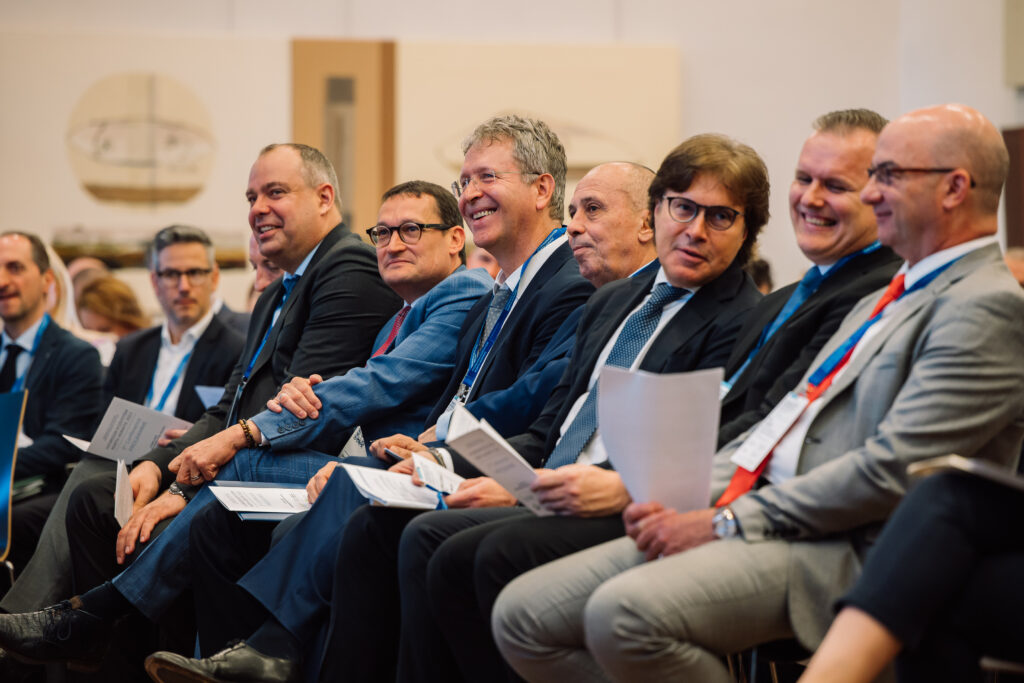
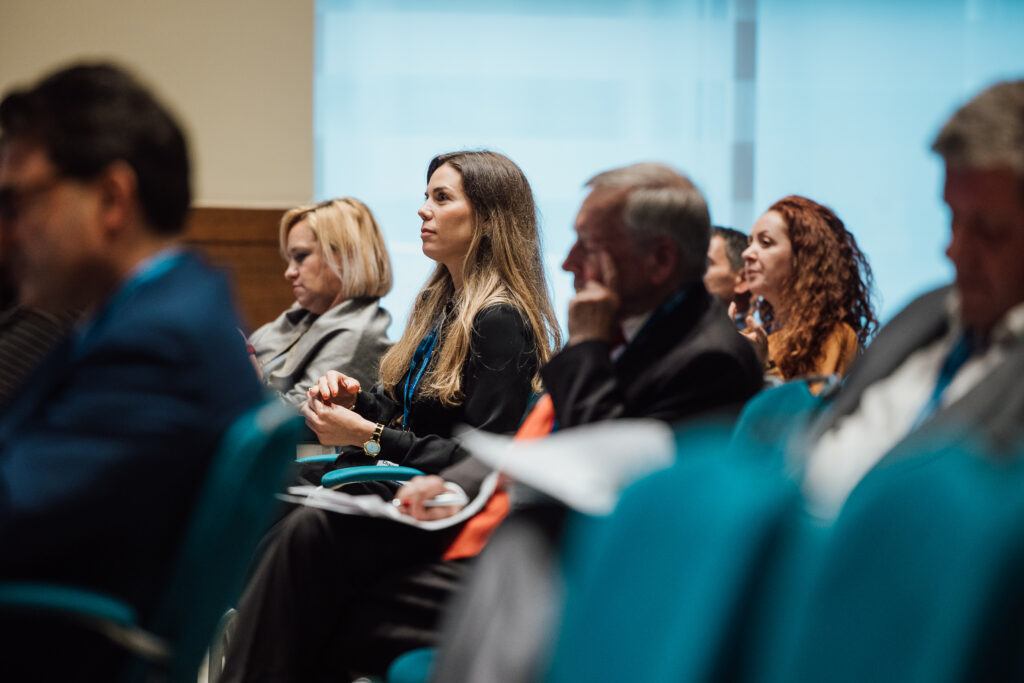
Milestones
Here are the main milestones highlighting toe contribution of the Conference to toe evolution of the Hydrogen Ecosystem North Adriatic.
21st November 2021: NAHV initiative received the support from the decision makers from the northern Adriatic region (1st Conference), what enables the start of the partnership of 37 partners for the first transnational hydrogen valley globally.
29th November 2021: In her opening address to the first Hydrogen Week conference, the President of the EU Commission Ursula von der Leyen exposed the example of the NAHV as a role model of how a comprehensive European hydrogen ecosystem should be developed.
22nd September 2022: The second Conference brought together consortium partners committed to the cooperation and support to the energy transition in the North Adriatic.
31st January 2023: The NAHV project proposal was identified as the highest graded hydrogen valley project of the year, in other words, the European hydrogen “flagship hydrogen valley project”, receiving a grant of €25M on 23rd May 2023. Following an enhanced support, 37 partners of the NAHV Consortium from five countries celebrated the success of the NAHV funding, while new project initiative were announced and a critical mass of interest for renewable hydrogen was reached in the North Adriatic region:
- GEP Krk project initiative was incubated and introduced to the general public.
- Dobrovo Elementary School received an award for the 5,000th student who passed the H2STUDENT educational programme.
23rd November 2023: President of the EU Commission Ursula von der Leyen announced at the Hydrogen Week 2023 – the EU support to Brazil in the amount of €2Bn for the import of renewable hydrogen resources to the Northern Adriatic region through GEP Krk, as a result of a successful action of the NAHV
18th January 2024: A debate organised by ECUBES at the WEF in Davos reaffirmed the commitment of our partners to transcontinental cooperation in the energy transition. The ORYX GREEN ADRIATIC BLUE initiative started there, aimed at supplying our region and the European Union with green hydrogen sourced from the MENA (Middle East and North Africa) countries, leveraging cutting-edge technologies. This initiative received strong support from Hydrogen Europe and Hydrogen Europe Research.
March 2024: NACHIP project (North Adriatic Clean Hydrogen Investment Platform) was awarded funding by the European Regional Development Fund through I3 Instrument, securing €7.6 million in grant for five investment pilot projects within the North Adriatic region. Furthermore, 18 start-ups will benefit from cascade financing.
June 2024: preparations commenced for the “NACHIP 2” initiative, which is poised for further development.
- Master’s degree students from IMB, School of Economics and Business of the University of Ljubljana will present their benchmarking analysis of best practices at the Conference scheduled for 13th and 14th
- University of Delft will participate in the upcoming Conference, presenting their world’s fastest hydrogen car, which has been designed and built by their talented students.
- ECUBES and its consortium partners are advancing a large-scale project initiative to facilitate hydrogen imports from the MENA region to the EU, utilizing a safe and highly efficient energy carrier that will benefit the countries within the NAHV with affordable clean hydrogen now supported by the NAHV JWG.
A ripple effect of our collective initiatives is significant. The North Adriatic region is increasingly recognized by young innovators and future leaders as a desirable destination for investment and development. This shift in perception is a direct result of the strong support and collaboration among our partners, without which none of these achievements would have been possible.
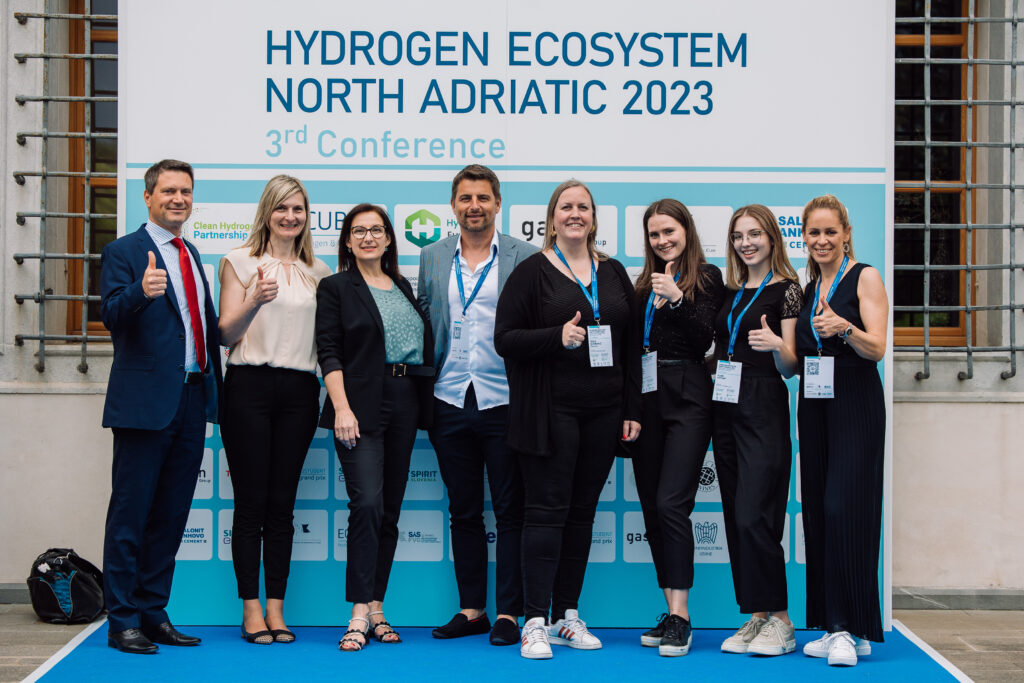
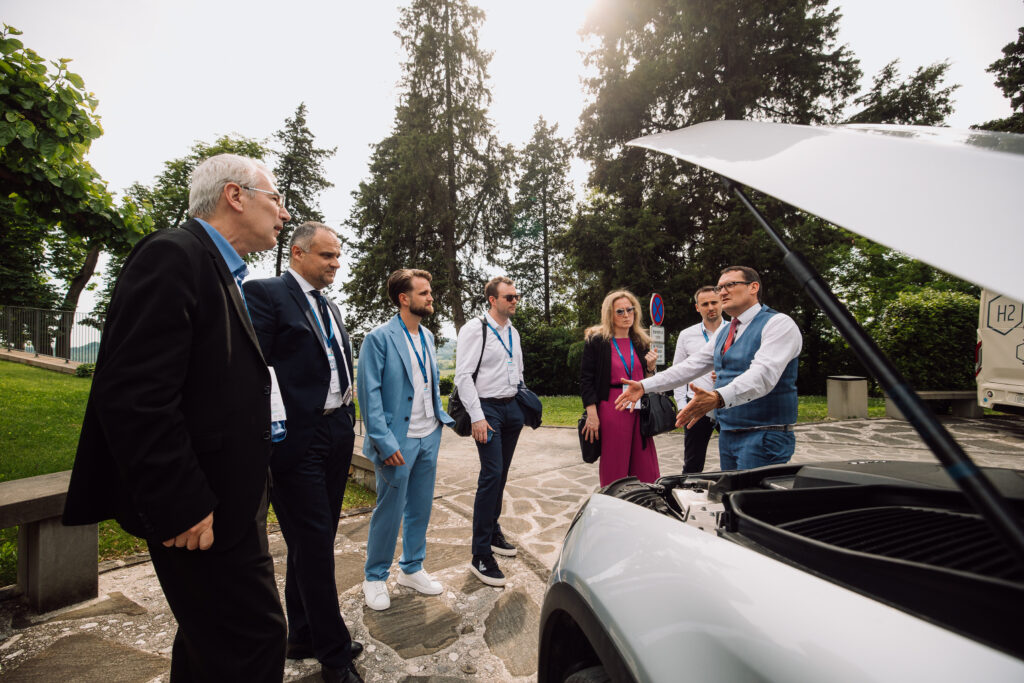
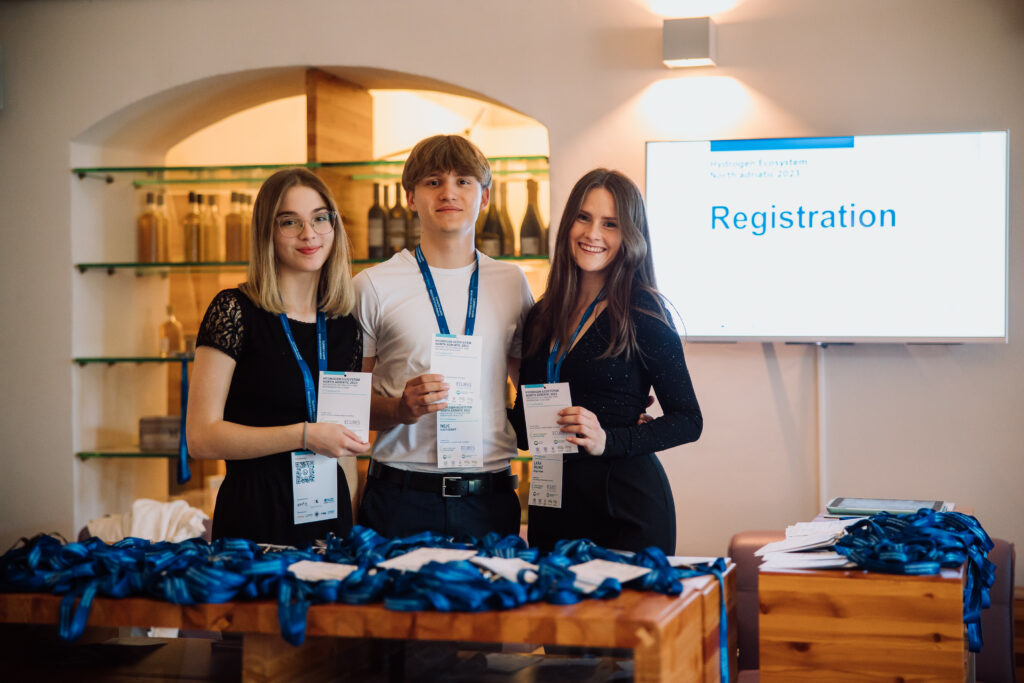
Key challenges to be addressed in the forthcoming years
META Circularity, joining ECUBES as the Conference co-organiser, is an innovation protagonist centred on the design and implementation of innovative business models and transformative processes in the context of circularity, sustainability and technology transfer. Being devoted to ecosystem innovations, facilitating the absorption of novel technologies and client-orientated solutions to meet meaningful uses, META Circularity contributed to the past editions of the Hydrogen Ecosystem North Adriatic Conference, is a partner of the NAHV consortium through its affiliation with META Group and, just as well as ECUBES, a partner of NACHIP consortium.
ECUBES and META Circularity agreed to act in a long-term partnership to continue the journey of the Conference together. In forthcoming years, the Conference will address key challenges that the evolving Ecosystem has been facing at this stage. Our aim is to grow it into an investment platform, where hydrogen-related solutions and technologies arising from the Ecosystem initiatives can attract talent and finance. This way, we will support them in matching their future resource requirements to further mature and scale.
These are key challenges to be addressed in the following years:
- A systemic framework for the green transition provided by the EU[2] identifies the renewable hydrogen as one of the main vehicles on the European energy landscape. The engagement of industries into the research and innovation actions, forward-looking educational process and bold private and public funding targeted to specific categories of actions ranging from infrastructure and startups to industrial ventures and education and capacity-building appear as critical issues for sustained pace of change through innovation.
- Renewable hydrogen-related technologies still require several years of maturation before they will create a prevailing impact on the hydrogen ecosystem realisation. It is critical to provide sufficient support to the “hydrogen innovators” to overcome the perils of the “Death Valley” on their innovation pathways.
- Stakeholder activation through NAHV, NACHIP and other initiatives in the target territory of the North Adriatic is still in an early stage. A bold, coordinated, multi-level systemic transformation is needed to increase the awareness, share the latest knowledge and experience, mitigate risks peculiar to first-movers, foster collaboration and increase readiness to invest in hydrogen-related actions.
- A transnational „market for innovation” is needed, a creative meeting place (platform) for the quadruple helix actors, providing a wider view on sustainable innovation as a means of the systemic transition and not only narrowly related to hydrogen. Such a well-functioning market can attract necessary funding and talent.
The ambition of the Hydrogen Ecosystem North Adriatic is to sustain its innovation leadership in making the European hydrogen economy a reality, contributing the accomplishment of the EU Green Deal targets in collaboration with other most advanced ecosystems across the EU and across Europe as a whole.
[2] This includes, among others: EU Green Deal, Fit for 55+, EU hydrogen Strategy and CE Action Plan as well as by the introduction of the EU Taxonomy, Corporate Social Responsibility Directive (CSRD) and related reporting standards, corporate sustainability due diligence directive (CSDDD) and the Sustainable Finance Disclosure Regulation (SFDR).